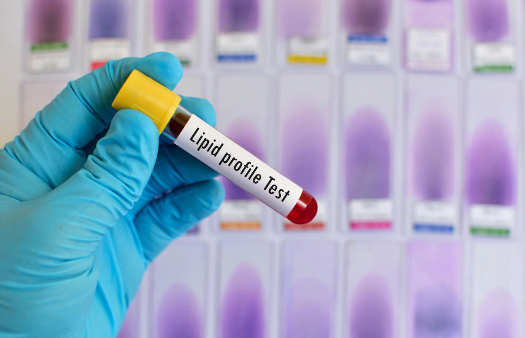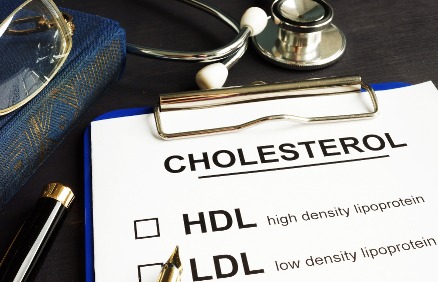
Cholesterol plays a crucial role in maintaining your body’s overall health, but too much of it can be dangerous. High cholesterol levels are a significant risk factor for heart disease, stroke, and other cardiovascular issues. That’s why understanding your lipid profile and cholesterol test results is key to managing your health. In this blog, we’ll explain what a lipid profile test means, how it helps in assessing cholesterol levels, and how to maintain a healthy cholesterol range.
A lipid profile test is a blood test that measures your cholesterol levels. It provides a detailed analysis of different types of fats in your blood, including low-density lipoprotein (LDL), high-density lipoprotein (HDL), and triglycerides. This test is crucial in evaluating your cardiovascular health, as it helps in determining your risk for heart disease and stroke.
The serum lipid profile gives important information about four key components:
1. Total Cholesterol: The overall cholesterol level in your blood.
2. LDL Cholesterol: Often referred to as "bad" cholesterol, high levels of LDL can lead to plaque build-up in your arteries, increasing the risk of heart disease.
3. HDL Cholesterol: Known as "good" cholesterol, HDL helps remove LDL cholesterol from your bloodstream, reducing the risk of cardiovascular issues.
4. Triglycerides: These are another type of fat found in your blood. High triglyceride levels can contribute to the hardening of your arteries, making heart problems more likely.
The lipid profile test is a comprehensive way to understand your cholesterol balance and assess your overall heart health.
The lipid profile test is an essential tool for diagnosing high cholesterol and managing heart disease risk. It helps doctors determine your cholesterol levels and understand the distribution of different types of cholesterol in your body. Monitoring your lipid profile regularly allows for early detection of high cholesterol, which can be treated before it leads to more severe conditions like heart attack or stroke.
When your cholesterol is high, it can lead to the accumulation of fatty deposits in your arteries. These deposits can restrict blood flow, making it more difficult for your heart to pump blood effectively. Over time, this can lead to serious cardiovascular diseases, including:
Coronary artery disease: Narrowing of the arteries due to plaque build-up, which can cause chest pain or heart attack.
Stroke: A blockage of blood flow to the brain due to fatty deposits or blood clots.
Peripheral artery disease: Reduced blood flow to the limbs due to narrowing arteries.
By taking a lipid profile test, you can learn if your cholesterol levels are in the LDL cholesterol range that could be harmful to your health, allowing you to make necessary lifestyle changes.

Your LDL cholesterol range plays a vital role in understanding your cholesterol levels. LDL, or low-density lipoprotein, is often referred to as "bad" cholesterol because high levels of LDL can cause plaque to build up in your arteries, increasing the risk of heart disease and stroke.
Here are the general LDL cholesterol ranges:
Optimal: Less than 100 mg/dL
Near optimal: 100–129 mg/dL
Borderline high: 130–159 mg/dL
High: 160–189 mg/dL
Very high: 190 mg/dL or higher
If your LDL levels are high, it’s time to take action and reduce cholesterol naturally to avoid potential health risks.
While medication may be necessary for some individuals, there are several natural ways to lower cholesterol. Here are some effective lifestyle changes to help reduce cholesterol naturally:
1. Eat Heart-Healthy Foods
Certain foods can help lower cholesterol levels, including:
Oats and barley: High in soluble fiber, which helps reduce LDL cholesterol.
Fatty fish: Rich in omega-3 fatty acids, which can lower triglyceride levels.
Nuts and seeds: Almonds, walnuts, and flaxseeds can help reduce total cholesterol and LDL levels.
Olive oil: A heart-healthy fat that helps lower LDL cholesterol levels.
2. Exercise Regularly
Regular physical activity helps increase HDL (good cholesterol) levels, while also reducing LDL (bad cholesterol). Aim for at least 30 minutes of moderate exercise, like walking, cycling, or swimming, five days a week.
3. Lose Excess Weight
Losing weight can improve your cholesterol levels, particularly by lowering LDL cholesterol and triglycerides. A healthy weight supports better cardiovascular health and reduces the risk of high cholesterol.
4. Avoid High Cholesterol Foods
Certain foods can raise your cholesterol levels, including:
Saturated fats: Found in red meat, butter, and full-fat dairy products.
Trans fats: Found in processed foods, fried foods, and baked goods.
Avoiding or minimizing the intake of these foods can help maintain healthy cholesterol levels.
Understanding your lipid profile test results is crucial in managing your heart health. Here’s what the key components of your test results mean:
Total cholesterol: Should be less than 200 mg/dL for a healthy heart.
LDL cholesterol: The lower, the better. Levels less than 100 mg/dL are considered optimal.
HDL cholesterol: Higher levels are better. Aim for 60 mg/dL or higher.
Triglycerides: Should be less than 150 mg/dL.
If your results show that your cholesterol levels are higher than recommended, it’s time to make dietary and lifestyle changes to reduce cholesterol naturally.
A lipid profile test is an essential tool in understanding your cholesterol levels and overall heart health. By regularly checking your cholesterol and making necessary lifestyle changes, such as eating healthier foods, exercising, and avoiding high-cholesterol foods, you can significantly reduce your risk of heart disease and stroke. If your LDL cholesterol range is too high, taking steps to decrease cholesterol naturally can help you maintain a healthier, happier life. Remember, a healthy heart starts with good habits and regular monitoring of your health!